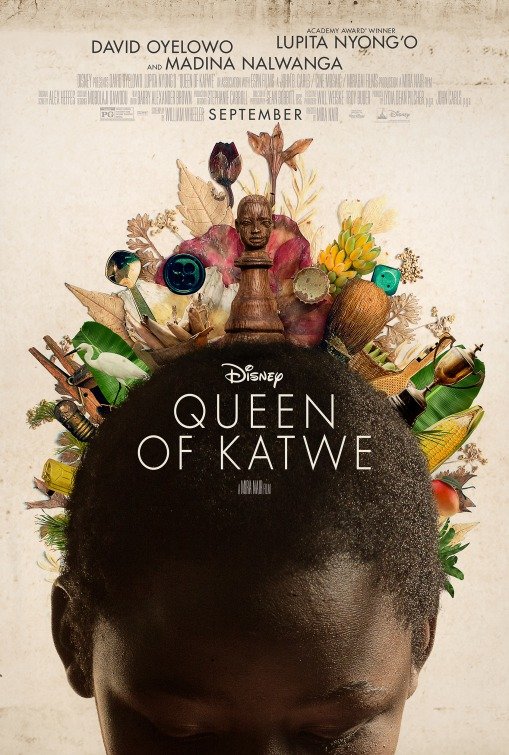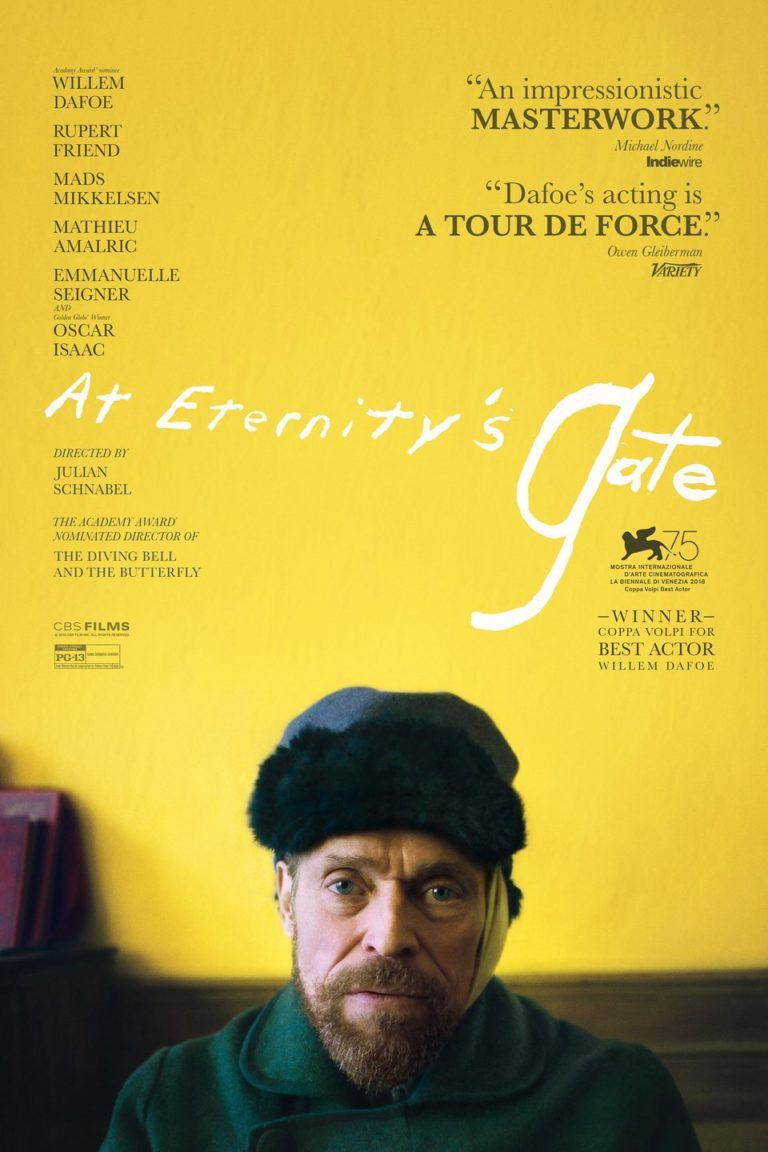“Van Gogh’s Final Years”
What You Need To Know:
This beautifully shot movie creates a visually intimate portrait of the painter, yet falls short of intimately connecting the audience with the real man and his beliefs. The movie never gives a clear answer as to whether Van Gogh was crazy, brilliant, or blessed, leaving the audience to decide. Still, there is much beauty to be found in AT ETERNITY’S GATE. There are also some profound statements about Van Gogh’s faith in Jesus Christ and God’s calling on his life. At one point, Van Gogh calls the beauty of nature “a vibrating energy speaking in God’s voice.”
Content:
Overt positive references to God and Jesus Christ, with Van Gogh discussing God’s calling on his life, marred by references to Van Gogh’s mental instability that take up a good portion of the movie;
One “bastard” in reference to Richard III;
A street brawl breaks out, a man gets shot, some kids push over Van Gogh’s paintings, Van Gogh recounts how he cut off his ear (not depicted);
Someone mistakes the barmaid for a prostitute;
No nudity;
Multiple scenes of drinking in a tavern, people reference Van Gogh’s drinking at various times throughout the movie, suggesting he drinks too much;
Two men smoke pipes; and,
Man is committed to a mental institution twice.
More Detail:
In the final few years of his life, Vincent Van Gogh left Paris for a smaller town in France, where he could get away from the pretentious artistic community and paint in the sunshine. While he does enjoy the nature he finds there, most of his time is marked with tragedy. He is outcast by the people of the town, sent to a mental institution twice, and has a tumultuous friendship with fellow painter Paul Gauguin, who criticizes his work and clamors for a revolution of the artistic community. Van Gogh struggles with his artistic gifts, why he was meant to be a painter, his Christian faith and a lack of appreciation of his painting from the art community, even up to his death.
Directed by visionary artist Julian Schnabel, AT ETERNITY’S GATE is an aesthetically beautiful movie. The cinematography is especially stunning, capturing the beauty of nature as Van Gogh appreciated it. The audience feels the same sense of wonder that Van Gogh must have felt when he said things like, “The essence of nature is beauty, a vibrating energy speaking in God’s voice.” The title of the movie comes from a moment in the movie where Van Gogh comes upon a vast landscape and exclaims, “It feels like I’m looking into eternity.” Several beautiful sequences of cinematography in the movie share this sense of wonder and awe that Van Gogh had with nature, and how he saw God within it.
And yet sometimes the movie goes too far in its attempt to embody Van Gogh’s mental state. Many shots are from the point of view of Van Gogh, with actors speaking directly into the camera or even a few sequences of dizzyingly shaky first-person shots of “the audience as Van Gogh” walking through nature. It can be a bit much at times, and ironically distances the audience from the character, rather than letting us embody him. For all the work the movie does to try to depict what it was like to be inside Van Gogh’s mind, the filmmakers leave viewers with few conclusions about what was going on inside his mind.
Most of the movie deals with Van Gogh’s personal beliefs and his mental state. His beliefs in God are juxtaposed by an apparent madness. In the movie, Van Gogh believes he sees things that aren’t there, that he sees the world in a different way than everyone else, and that it’s his responsibility to paint the world as he sees it. And yet, he’s fearful of the way he sees the world. Many of his discussions with Gaugin, played excellently by Oscar Isaac, deal with the existential nature of an artist, their responsibilities, and their expressions.
On one hand, the movie depicts Van Gogh as an exceptionally gifted artist with a beautiful faith. He points to God when he says, “Existence can’t be without reason.” Toward the end of the movie, he has a powerful conversation with a priest about his beliefs in Jesus. “God gave me this gift,” Vincent explains to the priest. “It’s the only gift he gave me.” Van Gogh talks about his faithfulness to God, saying that he paints because it was God’s gift to him regardless of whether or not he will receive fame for it on earth. “Life is for sewing, the harvest comes later,” he explains. His faith even goes so far as to believe that maybe his gift wasn’t for the life he lived in, but another time period. This might have been a bit of dramatic irony, considering Van Gogh didn’t become famous until after his death, but the comment rings true to Van Gogh’s personal belief and trust in God. In a refreshing move, the scene calls Jesus out by name, as Van Gogh quotes various verses in the New Testament, refers to his past attempts at being a minister, and professes to still believe in Jesus.
On the other hand, this faith gets muddled in a mess of other questions about Van Gogh’s mental health. He is committed to a mental institution twice and shunned by the people of the town. The movie cuts to black at various times where Vincent claims he doesn’t remember having violent outbursts. People make references to how much he drinks. The movie doesn’t depict the infamous incident of Van Gogh cutting off his ear, but he describes how he did it and why, which isn’t a very clear answer. In fact, the movie never gives a clear answer as to whether Van Gogh was crazy, brilliant, or blessed. It seems it may be up to viewers to decide.
There’s a lot of controversy surrounding Van Gogh’s life and death. However, based on numerous historical accounts, he was much more devout than AT ETERNITY’S GATE would have us believe. The movie has numerous missed opportunities, mostly because of the parts of Van Gogh’s life that it chose to focus on. Before Paris and Arles, Van Gogh spent many years as a missionary and was exceptionally devout. Unfortunately in this depiction, viewers get mostly a mentally unstable artist plagued by a world that doesn’t understand him. Yet, there is still redemption to be found as his last words in the movie are, “Oh God, will you receive your son?”


 - Content:
- Content: 




